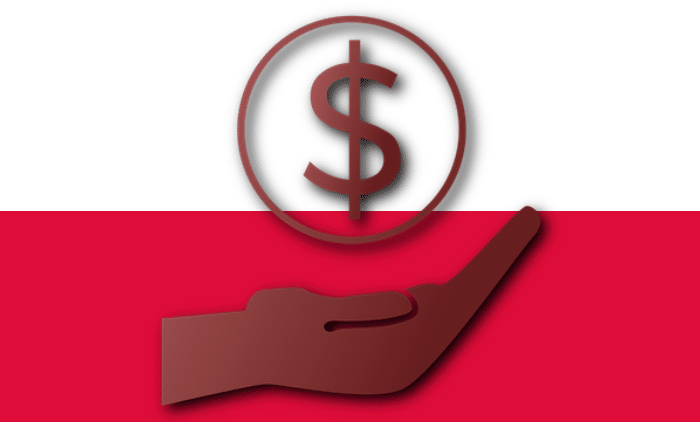NBP: inflation for 2023 will be 11.9 percent, and 5.2 percent for 2024
[ad_1]
The central path of the central bank’s inflation projection predicts CPI for this year at 11.9%, and 5.2% in 2010. for 2024, according to the NBP report. It is assumed that GDP growth will be 0.6% this year and 2.4% next year. – added.
As stated, the central path of the NBP projection assumes core inflation this year at 10.5 percent, next year at 6.1 percent.
“According to the projection – prepared with the assumption of unchanged NBP interest rates and taking into account the data available until June 22, 2023 – the annual price growth will be with a 50% probability in the range of 11.1-12.7%. in 2023 (compared to 10.2-13.5% in the March 2023 projection), 3.7-6.8% in 2024 (compared to 3.9 – 7.5 percent) and 2.1 – 5.1 percent. in 2025 (against 2.0-5.0%)” – indicated in the Monday publication of the NBP “Inflation Report – July 2023”.
It was added that the annual GDP growth rate according to the projection will be with a 50% probability in the range of -0.2 – 1.3%. in 2023 (against -0.1-1.8% in the March 2023 projection); 1.4 – 3.3 percent in 2024 (against 1.1-3.1%) and 2.1-4.4%. in 2025 (against 2.0-4.3%).
According to the projection, CPI inflation in Poland will also decrease in the coming years.
It was underlined that “core inflation would decline over the projection horizon”. However, some members of the Council pointed out that from mid-2023 most of the inflation would result from core inflation. It was reported that some members of the Council pointed to uncertainty regarding the outlook for inflation, “including some members of the Council emphasizing the possibility of price growth running above the central path of the projection, while others pointed to the likelihood of a faster fall in inflation”.
As indicated in the report, fiscal instruments, including an increase in the amount of the childcare benefit (Family 500 plus Program) from PLN 500 to PLN 800 at the beginning of 2024, the permanent introduction of the fourteenth pension and state support for the purchase of the first apartment, i.e. the “Safe Loan” program 2 percent.” will have a positive impact on economic growth in 2024-2025.
The NBP report states that the situation on the labor market remains good, as evidenced by the low unemployment rate, high level of employment, and further increase in average nominal wages.
“At the same time, the weakening of economic activity is conducive to a decline in the number of vacancies and a reduction in employment and wage growth, with real wages recently remaining lower than a year ago,” it added.
According to the report, in the coming quarters private investments will continue to be negatively affected by the effects of Russia’s armed aggression against Ukraine. It added that this impact, however, is gradually waning, which is reflected in the declining assessments of uncertainty formulated by enterprises. Investment demand is still adversely affected by high commodity prices in global markets, which increase the costs of enterprises, but the negative impact of this factor is decreasing.
It was pointed out that, according to NBP surveys, the level of investment optimism of enterprises in 2009 Q1 was improved, following an increase, albeit from a very low level, in the assessment of quarterly demand prospects.
“It is expected that the dynamics of corporate investment throughout 2023 will decrease, but only to a limited extent. A more significant deterioration affects the demand for housing, which is more strongly affected than the demand of enterprises by the effects of the previous increases in NBP interest rates, limiting the availability and increasing the cost of credit. However, the effect of this factor will be mitigated by the government’s introduction of the +Secure Credit 2%+ program from July this year.” – emphasized.
As stated, a clearer acceleration in the dynamics of investment demand in the enterprise sector is expected in 2025, supported by the need to increase their production capital, resulting from the investment rate lowered during the pandemic, the low level of automation and robotization of Polish industry, and rising labor costs. (PAP)
author: Łukasz Pawłowski, Magdalena Jarco
pif/ amac/
[ad_2]
Source link



